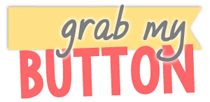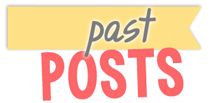I was fortunate
enough to attend the 2014 Alaska RTI Conference: RTI and the New Standards
conference on Saturday, January 25th and Sunday, January 26th.
Along with the keynote address, I attended Shelby Skaanes’ session entitled
Intervention Design for Literacy, Anita Archer’s session called Writing
Foundation Skills, and Melissa Linton and Michael Hanson’s session entitled
Quality Tier 1 Instruction Using the Danielson Framework as a Professional
Growth Model.
My biggest takeaway
from the weekend conference, besides the 3 pounds I gained from delicious wine
and fabulous food, came from Anita Archer's session. Specific attention
was paid to handwriting and typing, spelling, and sentence formation. With
research to back it up, Archer argued that students must master these basic
skills in order to gain true fluency in their writing. I was really intrigued
on her suggestions and discussion around spelling.
So, this week in spelling we tried something new. I did not introduce the spelling
pattern/rule for the week on Monday morning and walk students through the list
word by word like I usually do. Instead, I gave, what we call in our classroom
a, low stakes spelling pre-test. In this case, not only was it a
low-stakes spelling pre-test, but it was also completely blind --
meaning they had no clue what words I was going to call out or what pattern
they were going to fall under. (In my class low-stakes tasks mean DON'T
PANIC-- this is NOT a grade, it is just for you!) Before ever having seen the
word list, I called out the first word and then asked the students to try and
spell the word. Next, we all put our pencils down and I immediately wrote the
correct spelling on the projector. Students then did one of two things. If they
got the word correct, they could either do nothing, put a little smiley, or add
a check. If they missed the word they simply crossed it out and wrote the
correct spelling next to it. It was NO BIG DEAL to miss the word. In fact, I
modeled missing several words and sounding them out how I thought they sounded.
There was NO erasing!
A couple of really cool things happened:
- Students were super engaged with every word because we corrected each word right after we tried it.
- Students started guessing the pattern!!! This week there were actually two patterns which makes that even more impressive.
- We did the sight words just for fun --- and they loved these challenge words! I can tell it really helped with their ability to read them all week long in the stories we read.
Here
is my modeled example. One of my biggest priorities was making sure my students
knew how to cross out their words, rather than erase and rewrite.















0 comments:
Post a Comment